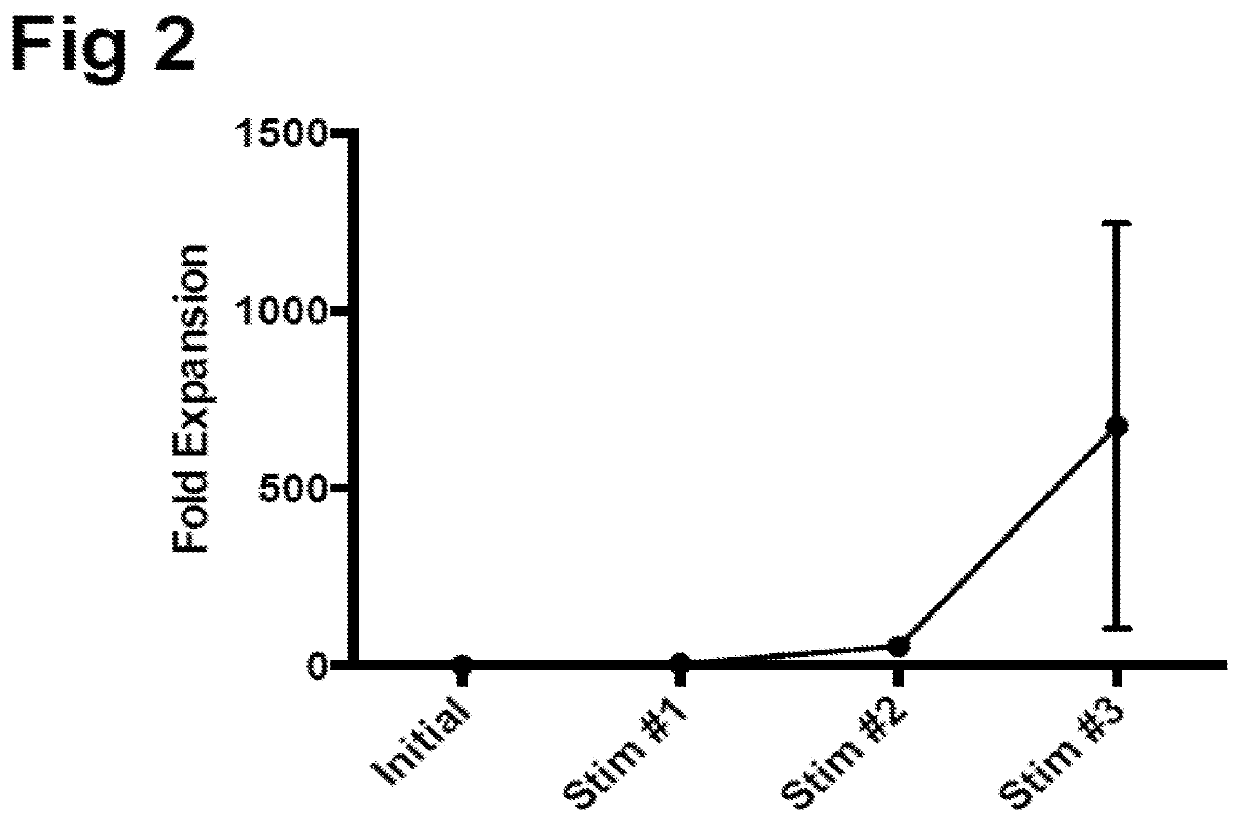Generating HPV antigen-specific cells from a naive t cell population
a technology of hpv and t cells, which is applied in the field of human papilloma virusor hpvantigenspecific t cells, can solve the problems of difficult to expand antigen-specific t cells from these nave cell populations, impose obstacles to the expansion of hpv-recognizing t cells, and undesirable methods that involve the use of viruses to produce antigen-specific t cells for therapeutic us
- Summary
- Abstract
- Description
- Claims
- Application Information
AI Technical Summary
Benefits of technology
Problems solved by technology
Method used
Image
Examples
Embodiment Construction
[0021]“Accessory cell” is a cell, such as a K562 cell, that provides costimulation for recognition of peptide antigens by T cells or that otherwise assists a T-cell recognize, become primed or expand in the presence of a peptide antigen. Accessory cells may also be other artificial or alternative antigen presenting cells.
[0022]An “activated T-cell” or “ATC” is obtained by exposing mononuclear cells in cord blood or another sample containing naïve immune cells to a mitogen, such as phytohemagglutinin (PHA) and / or Interleukin (IL)-2.
[0023]An “antigen” includes molecules, such as polypeptides, peptides, or glyco- or lipo-peptides that are recognized by the immune system, such as by the cellular or humoral arms of the immune system. The term “antigen” includes antigenic determinants, such as peptides with lengths of 6, 7, 8, 9, 10, 11, 12, 13, 14, 15, 16, 17, 18, 19, 20, 21, 22 or more amino acid residues that bind to MHC molecules, form parts of MHC Class I or II complexes, or that are...
PUM
 Login to View More
Login to View More Abstract
Description
Claims
Application Information
 Login to View More
Login to View More - R&D
- Intellectual Property
- Life Sciences
- Materials
- Tech Scout
- Unparalleled Data Quality
- Higher Quality Content
- 60% Fewer Hallucinations
Browse by: Latest US Patents, China's latest patents, Technical Efficacy Thesaurus, Application Domain, Technology Topic, Popular Technical Reports.
© 2025 PatSnap. All rights reserved.Legal|Privacy policy|Modern Slavery Act Transparency Statement|Sitemap|About US| Contact US: help@patsnap.com



